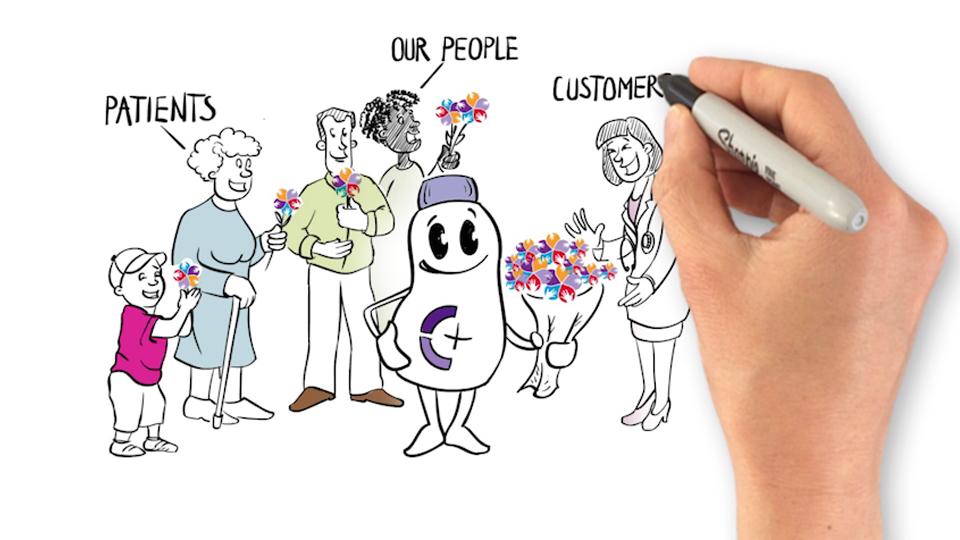What is Whiteboard Animation?
A whiteboard animation is basically an explainer video that combines great storytelling with animated characters. They are highly engaging, provide excellent educational value and enable presenters to explain complex ideas in a clear way. The first stage is to create a script. Without a strong script, the advantages of storytelling are dented. The second step is to create animated characters. You may need artistic qualities to nail this. Even in digital animation, there is an element of drawing is involved. However, you don’t have to be a great artist. If you are a good story tell with a strong sense of humour, poorly drawn animation can be used for comedic effect – another great strength animated whiteboards have in winning over the attention of viewers. Having said that, high-quality animation offers a human touch in that it brings digital characters to life.
Humans want to watch human-like characteristics because we can associate and connect with them on an emotional level. Furthermore, you can deliver a full-scale presentation on an animated whiteboard in a fraction of the time it would ordinarily take you. By dramatically reducing timeframes, you can use the extra time to field Q&A’s – or get back to work and do something productive. Not only that, but whiteboard animation videos have a secret superpower; they engage audiences on a subconscious level which generates anticipation. It is this quality that makes animated explainer videos the ideal too for explaining complex topics.
Psychological Effects of Whiteboard Animations
Animated whiteboard videos not only entertain viewers, they have a positive influence on the brain’s capacity to recall the contents once the presentation is over. A study performed by psychologist, Richard Wiseman discovered that when people watch animated films, images solidify the information described by the narrator. The images, of course, draw attention. When presenters also include storytelling techniques in the script, the content is easier to recall in the mind, and remains in the memory for longer. Furthermore, viewers will remember more details. It is believed the brain is able to process 400 billion bits of information per second. Yet the average person will only remember 4 points you make in a presentation. One of the reasons for this is because the conscious mind cannot cope with all the information being processed by the brain. Information is therefore filtered and filed in the subconscious for later use.
Whiteboard animation videos help to unburden the attentional resource of viewers. Images appear one by one and are accompanied with a narrative that clearly explains what it happening until the story unfolds. Therefore, scripts need to be written in a way that enables the storyline to run smoothly. Animated films trigger an area of the brain that is responsible for viewer anticipation, which prompts viewers to guess what will happen next.
Well constructed scripts active “deep processing” whereby information that is received is easier for the memory to recall. It is believed that deep processing is as effective as someone intentionally learning new information by continuously repeating it. It also helps if the narrator has a soothing voice viewers want to listen to. Adding amusing elements can also enhance the learning experience and make the content easier to recall. So, with an interesting, well-structured storyline and high-quality animations, you can create dynamic presentations that have a powerful impact – and leave you with sufficient time to discuss the topic in more depth.









